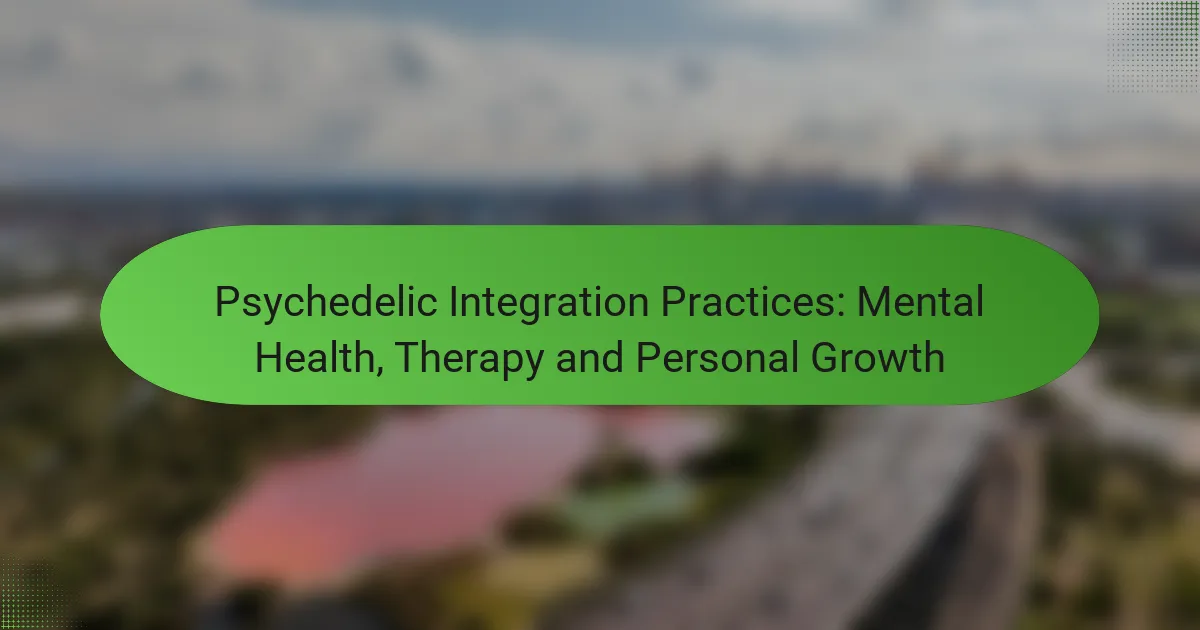Lucid dreaming offers a powerful platform for enhancing creativity, visualization, and problem-solving skills. By becoming aware of their dreams, individuals can tap into their imagination, explore innovative ideas, and manipulate their dream environments. Techniques such as reality testing and mental exercises can help induce lucidity, allowing dreamers to harness their subconscious for personal growth and creative exploration.

How Can Lucid Dreaming Enhance Creativity?
Lucid dreaming can significantly boost creativity by allowing individuals to explore their imagination and generate innovative ideas in a dream state. This unique mental environment facilitates unrestricted thought processes, leading to enhanced creative outputs.
Improved idea generation
In a lucid dream, the mind is free from the constraints of reality, enabling more fluid and unconventional thinking. This state can lead to the generation of novel ideas that may not surface during waking hours. Keeping a dream journal can help capture these ideas immediately upon waking, ensuring that no inspiration is lost.
To maximize idea generation, practice techniques like reality checks and visualization before sleep. These methods can enhance your ability to become aware within the dream, allowing for more productive brainstorming sessions.
Enhanced artistic expression
Lucid dreaming provides a unique platform for artists to experiment with their craft without the limitations of the physical world. Artists can visualize and manipulate colors, shapes, and forms in ways that may be impossible in waking life. This can lead to breakthroughs in artistic style and technique.
For those in creative fields, setting specific artistic goals before sleep can guide the dream experience. For example, envisioning a particular painting or musical composition can help unlock new avenues of expression during lucid dreams.
Increased problem-solving skills
Lucid dreaming can enhance problem-solving abilities by allowing individuals to approach challenges from different angles. In the dream state, the brain can make connections that might not be apparent during waking hours, leading to innovative solutions.
To leverage this, identify a specific problem before sleep and mentally rehearse it. This focused intention can help your subconscious mind work on the issue while you dream, potentially leading to insights or solutions upon waking.

What Techniques Induce Lucid Dreaming?
Several techniques can effectively induce lucid dreaming, allowing individuals to become aware that they are dreaming while still in the dream state. These methods often involve mental exercises, specific sleep patterns, and reality-testing practices to enhance self-awareness during dreams.
MILD technique
The MILD (Mnemonic Induction of Lucid Dreams) technique involves setting a strong intention to realize you are dreaming. Before falling asleep, repeat a phrase like “I will realize I’m dreaming” to reinforce this intention.
To enhance its effectiveness, visualize a recent dream and imagine yourself becoming lucid within it. This technique is best used after waking up from a dream, as it helps to strengthen the connection between your waking and dreaming states.
WBTB method
The WBTB (Wake Back To Bed) method requires waking up after about five to six hours of sleep, staying awake for a short period, and then returning to sleep. This approach increases the likelihood of entering REM sleep, where vivid dreams occur.
During the wakeful period, engage in activities related to lucid dreaming, such as reading about it or practicing reality checks. This can prime your mind for lucidity when you fall back asleep, making it easier to recognize when you are dreaming.
Reality checks
Reality checks are simple tests performed throughout the day to help you determine whether you are awake or dreaming. Common techniques include checking the time, looking at your hands, or trying to push a finger through your palm.
By regularly practicing these checks while awake, you increase the chances of performing them in a dream, which can trigger lucidity. Aim to do reality checks several times a day, especially when something unusual occurs, as this habit can carry over into your dreams.

How Does Visualization Work in Lucid Dreaming?
Visualization in lucid dreaming involves creating mental images that enhance the dream experience and facilitate control over the dream environment. This technique allows dreamers to explore creativity, rehearse scenarios, and reinforce personal goals while in a lucid state.
Creating vivid mental images
To create vivid mental images during lucid dreaming, focus on sensory details such as colors, textures, and sounds. The more specific and immersive the imagery, the more likely it is to manifest in the dream. For example, if you want to dream about a beach, visualize the sound of waves, the warmth of the sun, and the smell of saltwater.
Practicing visualization techniques before sleep can enhance the clarity of these images. Techniques such as guided imagery or meditation can help strengthen your ability to create and maintain vivid mental pictures.
Practicing scenarios
Practicing scenarios in lucid dreams can be a powerful tool for problem-solving or rehearsing real-life situations. By visualizing specific outcomes, you can explore different approaches to challenges you face. For instance, if you have a presentation, imagine yourself confidently delivering it and receiving positive feedback.
To maximize this technique, create a detailed script of the scenario you wish to practice. Include key points, emotions, and possible interactions to make the experience more realistic and beneficial.
Reinforcing goals
Reinforcing goals through visualization in lucid dreaming can help solidify intentions and motivate action in waking life. By vividly imagining achieving your goals, you strengthen your commitment and clarify your path. For example, if your goal is to improve fitness, visualize yourself exercising regularly and enjoying the benefits.
Consider creating a vision board or a list of goals to review before sleep. This practice can enhance your focus and ensure that your subconscious mind works towards these objectives while you dream.

What Are the Benefits of Lucid Dreaming for Problem-Solving?
Lucid dreaming can significantly enhance problem-solving abilities by allowing individuals to consciously navigate their dreams and explore creative solutions. This unique state of awareness opens up opportunities for innovative thinking and overcoming challenges in a relaxed environment.
Overcoming mental blocks
Lucid dreaming provides a safe space to confront and dismantle mental barriers that may hinder creativity. By recognizing these blocks within a dream, individuals can experiment with different approaches to overcome them without real-world consequences. For example, if someone struggles with public speaking, they can practice their speech in a dream setting, gaining confidence and clarity.
To effectively use lucid dreaming for this purpose, it’s helpful to set specific intentions before sleep. Focus on the mental block you wish to address, and visualize yourself navigating through it successfully during your dream.
Testing solutions in dreams
In a lucid dream, you can simulate various scenarios to test potential solutions to real-life problems. This allows for a trial-and-error approach without the risks associated with real-world experimentation. For instance, if you’re working on a project, you can visualize different strategies and assess their outcomes in the dream state.
To maximize this benefit, keep a dream journal to record insights and solutions encountered during lucid dreaming. This practice can help refine your problem-solving strategies and make them more actionable upon waking.
Gaining new perspectives
Lucid dreaming can facilitate new perspectives by enabling individuals to view problems from different angles. This shift in viewpoint can lead to unexpected insights and creative solutions that might not be apparent in waking life. For example, exploring a challenge as a character in your dream can provide unique insights into the situation.
To harness this benefit, actively engage with your dream environment. Ask questions or seek guidance from dream characters, as they can represent different facets of your psyche and offer valuable advice. This interaction can deepen your understanding of the issues at hand.

What Tools Can Assist in Lucid Dreaming?
Various tools can enhance your ability to achieve lucid dreaming, including apps, dream journals, and specialized sleep masks. These tools provide guidance, track your dreams, and offer cues that can help trigger lucidity during sleep.
Lucid dreaming apps
Lucid dreaming apps are designed to assist users in becoming aware that they are dreaming. Many of these apps offer features such as reality check reminders, dream tracking, and guided meditations that promote lucidity. Popular options include apps like “Lucid Dreamer” and “Awoken,” which are available on both iOS and Android platforms.
When selecting an app, consider user reviews and the specific features that align with your goals. Some apps may require a purchase or subscription, while others are free with optional in-app purchases.
Dream journals
Keeping a dream journal is a fundamental practice for anyone interested in lucid dreaming. By recording your dreams immediately upon waking, you enhance your dream recall and identify recurring themes or symbols that may trigger lucidity. Aim to write in your journal daily, even if it’s just a few sentences.
To make the most of your dream journal, include details like emotions, settings, and characters. Over time, this practice can help you recognize when you are dreaming, increasing the likelihood of achieving lucidity.
Sleep masks with cues
Sleep masks with cues are innovative tools that can help induce lucid dreaming by providing visual or auditory signals during REM sleep. These masks typically feature LED lights or sound alerts that activate when the wearer enters a dreaming state, prompting awareness without waking them up.
When choosing a sleep mask, look for adjustable settings that allow you to customize the intensity and type of cues. Some masks are more expensive but offer advanced features, while others are budget-friendly yet effective. Experiment with different options to find what works best for you.

What Are the Prerequisites for Successful Lucid Dreaming?
Successful lucid dreaming requires a combination of consistent practices that enhance awareness and dream recall. Key prerequisites include maintaining a regular sleep schedule, engaging in mindfulness practices, and employing effective dream recall techniques.
Regular sleep schedule
Establishing a regular sleep schedule is crucial for successful lucid dreaming. Aim to go to bed and wake up at the same time every day, even on weekends, to regulate your body’s internal clock. This consistency helps improve sleep quality and increases the likelihood of experiencing vivid dreams.
Consider using tools like sleep trackers or apps that remind you to wind down before bedtime. Aiming for 7 to 9 hours of sleep per night is generally recommended for optimal cognitive function and dream activity.
Mindfulness practice
Mindfulness practice enhances your ability to recognize when you are dreaming. Techniques such as meditation, deep breathing, or body scans can increase your awareness during waking hours, making it easier to carry that awareness into your dreams. Regular practice can help you become more attuned to your thoughts and feelings.
Incorporating mindfulness into your daily routine can be as simple as setting aside 10 minutes each day for focused breathing or guided meditation. This can improve your overall mental clarity and increase your chances of achieving lucidity while dreaming.
Dream recall techniques
Improving dream recall is essential for lucid dreaming, as it allows you to remember your dreams and recognize patterns. Keeping a dream journal is one of the most effective techniques; write down your dreams immediately upon waking to reinforce memory. Aim to capture as many details as possible, including emotions and settings.
Additionally, consider practicing reality checks throughout the day, such as questioning whether you are dreaming or pinching your nose to see if you can breathe. These habits can help you develop the habit of questioning your reality, making it easier to achieve lucidity in dreams.



